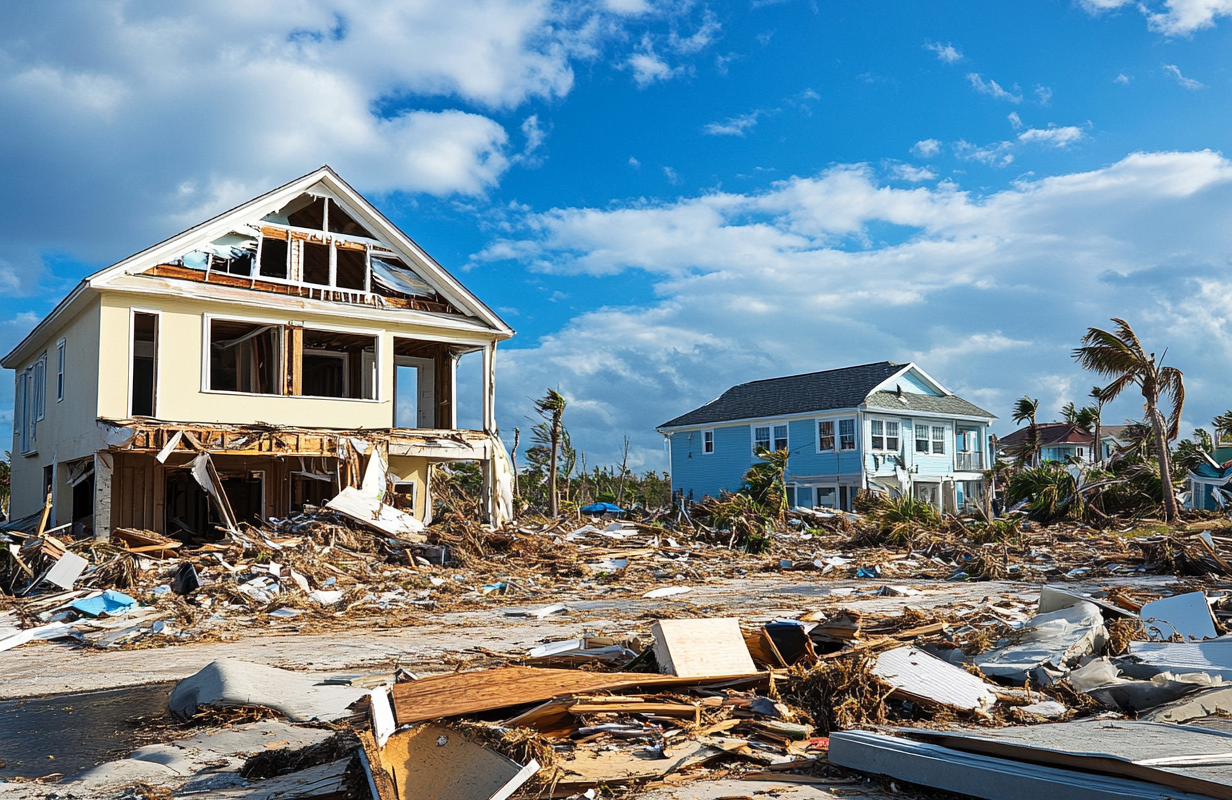Unraveling Hurricanes Helene and Milton: Disinformation in the Eye of the Storm
While Hurricane Helene wreaked physical destruction across the southeastern United States, another less visible but equally dangerous force emerged in its wake: disinformation. As communities grappled with the devastating impact of the storm, false narratives and conspiracy theories quickly flooded digital platforms, undermining relief efforts and sowing confusion. The Hurricane Helene disinformation campaign serves as a stark reminder of how misinformation can exacerbate the challenges already faced during natural disasters.
The Storm of False Narratives
As Hurricane Helene made landfall in Florida on September 26, 2024, and tore across multiple states, the usual flood of news reports and social media posts followed. However, amidst the legitimate updates, a tide of disinformation quickly began to circulate. Rumors ranged from claims that federal disaster funds were being siphoned off to suggestions that FEMA was using the chaos as an opportunity to seize private property. These baseless theories were amplified through social media platforms, with some posts gaining widespread traction and undermining public trust in government responses.
Congresswoman Marjorie Taylor Greene — of “Jewish space lasers” and Christian nationalism infamy — claimed that it’s obvious Democrats control the weather, as evidenced by a shared C-SPAN clip from the Obama years with then-CIA Director John Brennan talking about the highly theoretical and as of yet untried science of geoengineering. Because the very best way to keep your global conspiracy a top secret is to broadcast it into the public domain on C-SPAN.
Some viral posts alleged that the government had restricted airspace above affected areas, not for safety reasons, but as part of a shadowy conspiracy to cover up the true extent of the damage (for what reason is not specified). Other false reports claimed that FEMA was blocking local relief efforts and taking control of private land for nefarious purposes. These rumors not only spread fear and confusion but also hindered relief operations, as some individuals refused aid or hesitated to evacuate based on false information — endangering and perhaps even taking lives.
The Role of Digital Platforms in Spreading Misinformation
Digital platforms, especially social media, have played a significant role in the proliferation of disinformation during Hurricane Helene. The fast-moving nature of these platforms allowed misleading posts to go viral before accurate information could be verified and shared. The challenge for both federal agencies and local authorities was to quickly counter these false claims while also managing the logistics of the emergency response.
Efforts to debunk these myths often came too late to prevent their spread, and in some cases, the corrections themselves became targets of further conspiracy theories. The spread of disinformation about the hurricane exposed the weaknesses in the current information ecosystem, where rumors can travel faster than facts and where correcting falsehoods requires as much effort as managing the disaster itself.
There’s a famous quote about this: “a lie can travel halfway around the world while the truth is still putting on its shoes” and variations thereof. Somewhat fittingly, this quote has some disinformation surrounding it — being attributed to multiple sources including Mark Twain, Winston Churchill, and Jonathan Swift.
Impact on Relief Efforts
The disinformation surrounding Hurricanes Helene and Milton have had real-world consequences. Some individuals delayed seeking shelter, believing that government shelters were unsafe or that their properties would be taken from them. Others hesitated to apply for FEMA assistance, swayed by false claims that accepting aid would lead to government control over their homes or assets. These rumors impeded the distribution of aid and delayed recovery efforts for many communities in need.
Moreover, the false claims about airspace restrictions (amplified by billionaire Twitter owner Elon Musk along with a raft of other conspiracy theories) and property seizures diverted attention away from the pressing issues of relief and recovery, forcing federal and local officials to spend valuable time addressing the rumors instead of focusing solely on the logistics of disaster response.
Combating Misinformation During Disasters
The response to Hurricane Helene and Hurricane Milton highlights the importance of preparedness not only in terms of physical infrastructure but also, increasingly, in terms of information management. Federal and local agencies must be equipped to address disinformation quickly and effectively, especially in the midst of a crisis. Improved communication strategies, real-time fact-checking, and collaboration with digital platforms are essential tools in combating the spread of false information during disasters.
Moving forward, it is clear that disaster preparedness must include plans to counter the spread of disinformation. Misinformation can deepen the challenges posed by natural disasters, hindering relief efforts and prolonging recovery. By addressing the issue of disinformation head-on, we can better support communities in their efforts to rebuild and recover.
In the case of Hurricane Helene and Milton, while the physical storms have passed, the lessons about the dangers of misinformation will endure. The challenge now is to ensure that the next disaster does not bring with it a storm of falsehoods, but rather a clear and coordinated response that builds trust and ensures the safety and well-being of those affected. And ahat to do about the alarming number of Americans who double down on tuning out reality even in the face of their own mortality remains a weighty mystery.

Comments are closed.